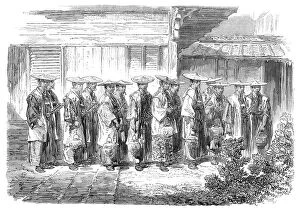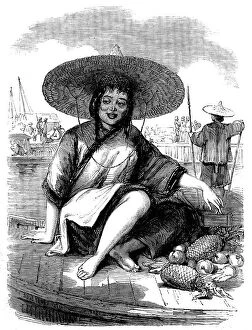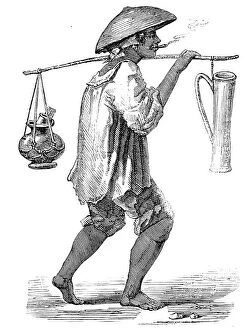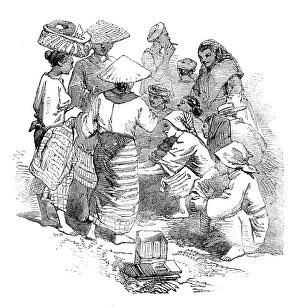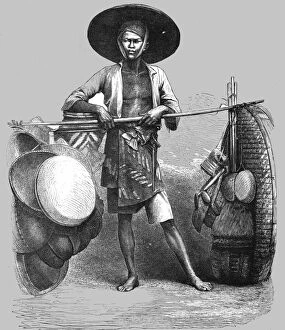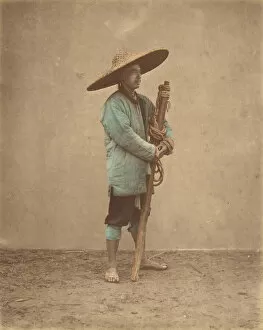Farmers Hat Collection
"Exploring the Cultural Significance of the Farmers Hat
For sale as Licensed Images
Choose your image, Select your licence and Download the media
"Exploring the Cultural Significance of the Farmers Hat: A Journey through Borneo and Beyond" Intriguing glimpses into different cultures and time periods can be found in a collection of captivating artworks featuring farmers hats. These humble yet essential headpieces have long been associated with agricultural communities worldwide, symbolizing hard work, resilience, and a deep connection to the land. One such depiction takes us back to 1875 in Borneo, where we encounter the Dyaks of the Tribe of Badjows. Their distinctive farmers hats shield them from both scorching sunrays and torrential downpours as they tend to their crops with unwavering dedication. A Visit to Borneo by A. M. Cameron offers a fascinating glimpse into their daily lives. Moving across time and space, we find ourselves immersed in late 19th-century Japan through Kogyo Tsukioka's series "Pictures of No Performances. " Here, Tori-oi-bune performers don these iconic hats while showcasing traditional Nogaku theater. The juxtaposition between ancient art forms and practical farming attire highlights how deeply ingrained agriculture is within Japanese culture. The artistic journey continues with Ando Hiroshige's portrayal of rice planting during an unknown era. This evocative piece captures the essence of rural life as farmers stoop over flooded fields wearing their trusty straw hats – a timeless image that transcends centuries. Shifting our focus momentarily to urban scenes, Katsukawa Shuncho's street scene from around 1789 transports us to bustling streets where vendors peddle their wares under wide-brimmed farmer hats. These simple yet versatile accessories provide shade for those laboring outdoors amid vibrant cityscapes. Returning once more to Japan's rich agricultural heritage, Hokusai's "Spring in the Rice Fields" presents an idyllic panorama bathed in golden hues.

